5 Best Grass Types for Michigan
BY TATIANA BARRIE | APRIL 28TH, 2023 | LAWN CARE, MICHIGANFrom the chilly shores of the Upper Peninsula to the warmer lawns of the southern region, Michigan’s climate can be as unpredictable as a Spartans vs. Wolverines coin toss. So, finding the perfect grass to withstand this moody weather is essential – not only to maintain a stunning lawn but also to ensure the health and longevity of your green oasis. To help you narrow down your search, we’ve compiled a list of the 5 best grass types for Michigan yards.
Cool-season grasses, as the name suggests, thrive in cooler temperatures and are the ideal choice for the weather swings we experience in the Great Lake State from season to season. In this article, we’ll explore 5 cool-season grasses: Tall fescue, fine-leaf fescue, Kentucky bluegrass, creeping bentgrass, and perennial ryegrass.
Now, keep in mind that you’ll need to consider some key factors, such as your soil type and maintenance preferences, before choosing the perfect cool-season grass for your Michigan yard.
Here’s what we’ll cover:
- Warm-Season vs. Cool-Season Grasses
- 5 Cool-Season Grasses for Michigan
- FAQ About Michigan Grass Types
- Choose Plant and Grass Varieties for Your Michigan Landscape
Warm-Season vs. Cool-Season Grasses
Warm-season grasses are ideal for regions with hot summers and mild winters, such as the southern United States. They grow best in temperatures ranging from 80 to 95 degrees Fahrenheit and will go dormant and turn brown during cooler months.
Cool-season grasses are perfect for areas with cold winters and moderate summers, like the northern United States. They thrive in temperatures between 60 and 75 degrees Fahrenheit, which allows them to stay green for most of the year, except in extreme heat or cold (when they go dormant).
5 Best Grass Types for Michigan
Michigan is divided into different USDA hardiness zones, ranging from the frigid 4a zone in the Upper Peninsula to the relatively toasty 6b zone in the southern part. This means that the northern region of Michigan (Marquette, Houghton, Sault Ste) has very cold winters and short, mild summers, while the southern area (Grand Rapids, Kalamazoo, Ann Arbor) has a slightly warmer climate, especially in summer.
Now, despite these differences, cool-season grasses are the only type of grass that can thrive in the Great Lake State. Why? Michigan’s overall temperature is on the cooler side, with summer highs only reaching mid-70s to low 80s degrees Fahrenheit and winter lows dropping to 20s or even colder. Warm-season grasses, which prefer hot climates, simply can’t handle Michigan’s tough winters and milder summers.
The following cool-season turfgrasses are not only the best options for Michigan, but also suitable for lawns across the entire state:
1. Tall Fescue
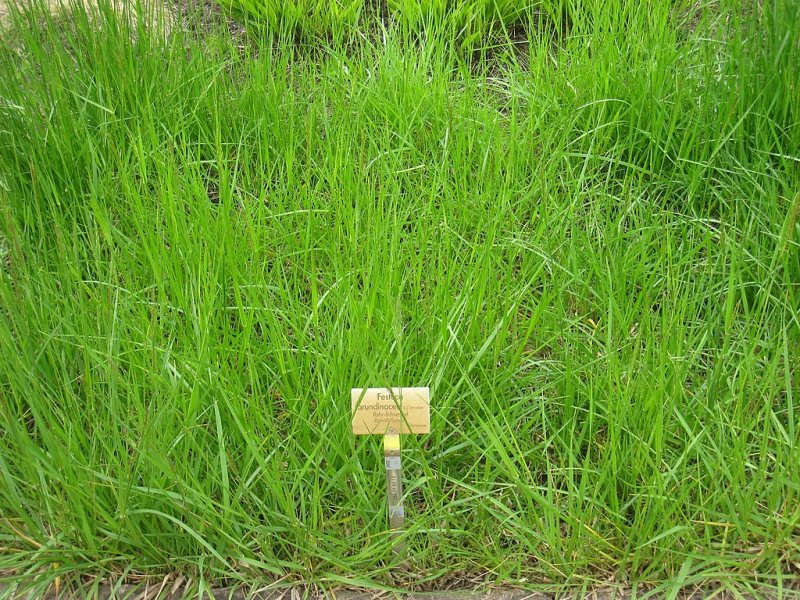
Photo Credit: Daderot / Wikimedia Commons / Public domain
If you’re living in the southern third of the Lower Peninsula, tall fescue is an excellent choice for your lawn. It has a deep root system that helps it stay strong during the hot summer months of cities like Jackson, Battle Creek, Coldwater, and Lansing. Got some big, beautiful oak trees shading your yard? No problem. Tall fescue can also grow in cool, shady areas – however, it’ll perform best with 4 to 6 hours of direct sunlight per day.
This grass species has strong durability and resistance to common Michigan turf diseases, so you can spend your weekends rooting for the Pistons or the Red Wings without worrying about your lawn’s health. Just keep in mind that fall fescue grows quickly and requires frequent mowing. Also, avoid over-fertilizing. This can cause excessive growth, making your lawn more vulnerable to diseases, such as brown patch or pythium blight.
Classification: Cool-season grass
Spreads by: Produces short rhizomes but has a bunch-type growth habit
Shade tolerance: Moderate
Drought tolerance: Moderate to High
Foot traffic tolerance: Moderate
Maintenance needs: Frequent mowing. Does not produce significant thatch.
Mowing height: Set mowing height to 2 inches when grass reaches 3 inches tall.
Potential for disease: Tolerant of most diseases when properly maintained.
Soil pH: 5.5-6.5
Soil type: Adapted to a wide range of soil conditions but prefers fertile clay soils with good drainage.
Other notes: Young tall fescue seedlings might need some extra care during the winter months. Without proper maintenance, they won’t be able to handle extreme cold temperatures. However, once they’re all grown and established, they can make it through most of Michigan’s chilly winters just fine.
2. Fine-leaf Fescue
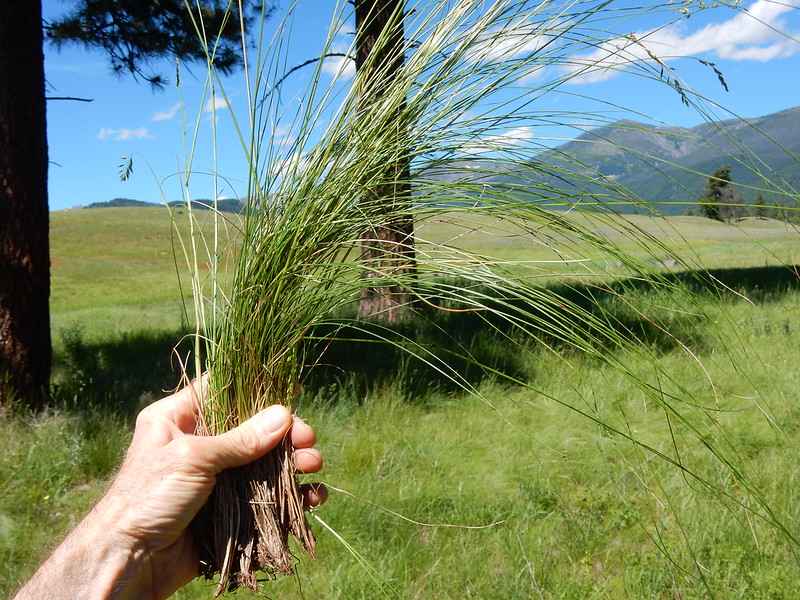
Photo Credit: Matt Lavin / Flickr / CC BY-SA 2.0
Fine-leaf fescue is another type of fescue grass, which is known for its fine, narrow blades and its ability to grow in a variety of soil types —even the acidic, infertile soils of the western Upper Peninsula and northern areas of the Lower Peninsula. It can withstand extreme temperatures better than other types of grasses do, and since it grows at a slower rate than other varieties (like perennial ryegrass), you won’t need to spend as much time maintaining your yard.
Depending on your lawn’s conditions, you can choose between the various cultivars of fine-leaf fescue to find the best fit for your specific needs. For example, if your lawn sees a lot of foot traffic, you may want to opt for a hardier variety, like creeping red fescue, which is known for its wear resistance. If, on the other hand, your yard has a significant amount of tree cover, chewings fescue is a better choice —it’s one of the most shade-tolerant fine fescue cultivars.
Classification: Cool-season grass
Spreads by: Creeping red Fescue spreads by rhizomes, while other fine fescues are bunch-type grasses, such as chewing, hard, and sheep fescues.
Shade tolerance: Moderate to High, depending on species
Drought tolerance: Moderate to High, depending on species
Foot traffic tolerance: Low to Moderate, depending on species
Maintenance needs: Low fertilizer and mowing needs.
Mowing height: Set mowing height between 2.5 and 4.0 inches, depending on species.
Potential for disease: Moderate. Common diseases include red thread, leaf spot, dollar spot, summer patch, and powdery mildew.
Soil pH: 6-6.5
Soil type: Will not perform well in wet soil conditions. It prefers drier soils and tolerates a wide range of soil types and fertility.
Other notes: Fine fescue isn’t typically recommended as a standalone option. If you ¡decide to use it in your lawn, it’s important to mix it with other grass types such as Kentucky bluegrass, and Perennial ryegrass for best results.
3. Kentucky Bluegrass
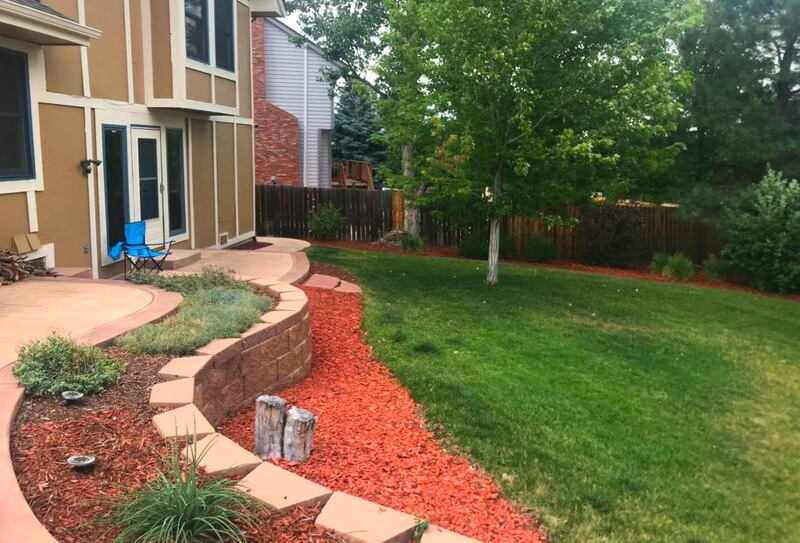
Photo Credit: Brenda Ryan / Wikilawn
Kentucky bluegrass is one of the most widely used grass types across all of Michigan’s cities. It’s cold-tolerant, which means it can handle the frosty winter months and come back in full force once spring rolls around. When summer arrives, it’s ready to take on the heat and bring a lush, green vibrancy to your lawn. However, if you live in the southeastern or southwestern regions of Michigan, you’ll need to make sure to water it consistently during the hottest months.
Kentucky bluegrass is also incredibly durable and can bounce back from the wear and tear of backyard BBQs, games of catch, and lazy afternoons spent lounging in the sun. Plus, it self-repairs quickly, which makes it a top pick for high-traffic lawns with active families or pets that love to run around outside. It’s important to note, though, that it has a low tolerance for shade, so it’s important to plant it in areas that receive full sun.
Classification: Cool-season grass
Spreads by: Rhizomes
Shade tolerance: Low shade tolerance, among the lowest of any cool-season grass.
Drought tolerance: Moderate – if the lawn is not properly irrigated during hot months, the grass will become brown.
Foot traffic tolerance: Moderate – however, its rhizomes give it an exceptional capacity to quickly recover from damage.
Maintenance needs: Moderate mowing frequency and high fertilization needs.
Mowing height: 2.5 – 3.5 inches
Potential for disease: Moderate to high; prone to several diseases, such as dollar spot, leaf spot, necrotic ring spot, summer patch, and stripe smut.
Soil pH: 6 – 7.5
Soil type: Performs best in well-drained, heavy soils with high fertility.
Other notes: There are different types of Kentucky bluegrass. For example, some may be better suited for high-traffic areas, while others may be more drought-tolerant. To create a resilient and adaptable lawn, it’s recommended to blend between 2 to 4 cultivars together. Some great options include Alpine, Boutique, Total Eclipse, and Nuglade cultivars.
4. Creeping Bentgrass
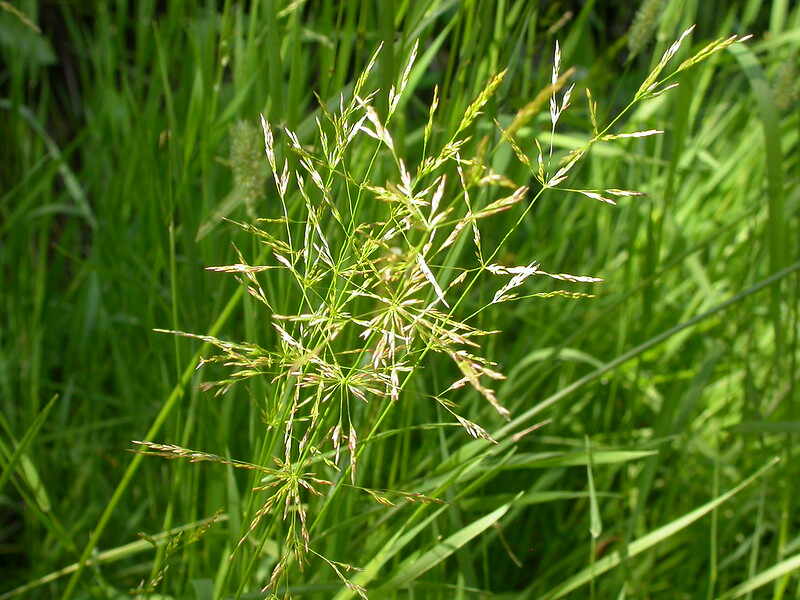
Photo Credit: Matt Lavin / Flickr / CC BY-SA 2.0
Creeping bentgrass grows best in Michigan’s northern and central regions, where the climate is cooler and the summers are mild. It’s a fine-bladed grass that can create a dense, uniform lawn when properly maintained. Now, while it can give your yard a lush, green look, it’s actually pretty rare in Michigan lawns.
Why? Well, creeping bentgrass requires a lot of maintenance. It’s prone to certain diseases, like dollar spot and brown patch, so you’ll need to be diligent about monitoring your lawn and treating any issues that arise. Additionally, it prefers well-draining soils, so if you live in an area with heavy clay or compacted soil (like the southern region of Michigan), you may need to amend your soil before planting.
Classification: Cool-season grass
Spreads by: Stolons
Shade tolerance: Moderate
Drought tolerance: Low
Foot traffic tolerance: Moderate
Maintenance needs: Requires frequent watering, fertilizing, dethatching, and mowing.
Mowing height: 0.5 – 0.125 inches.
Potential for disease: High disease potential. Common infections include dollar spot and brown patch.
Soil pH: 5.5-6.5
Soil type: Prefers moist soils with good drainage.
Other notes: Creeping bentgrass is known for its aggressive, spreading growth habit. If you’re using creeping bentgrass in a mixed turf area, it’s important to contain its spread to prevent it from invading other grass types.
5. Perennial Ryegrass
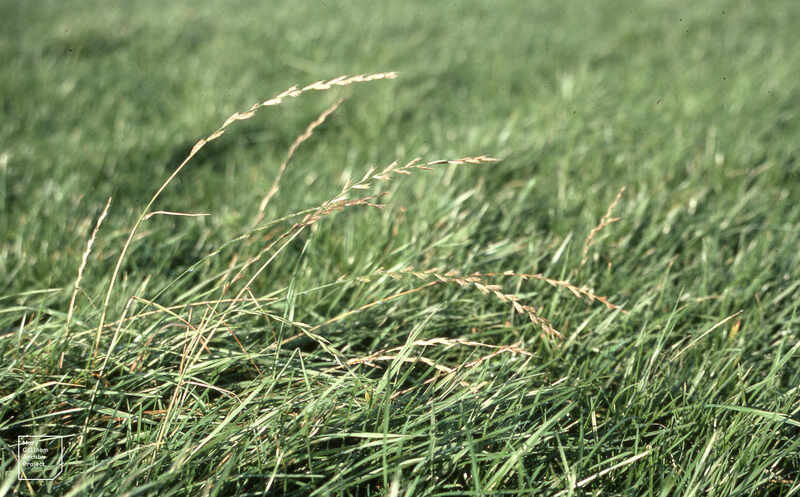
Photo Credit: Dr Mary Gillham Archive Project / Flickr / CC BY 2.0
Perennial ryegrass is a cool-season grass with fine, shiny leaves that will leave your lawn looking like a Pure Michigan ad. While Michigan’s cold winters can be tough on this grass type, its rapid establishment can help it recover quickly from any damage. Plus, it’s also highly resistant to pests and diseases commonly found in Michigan, making it a top choice for homeowners who prefer to keep chemical pesticides at bay.
This grass type thrives in areas such as the southwestern and southeastern parts of the Lower Peninsula, where the climate is moderated by the proximity to the Great Lakes. The coastal zones along Lake Michigan or Lake Erie can also benefit from Perennial Ryegrass’s adaptability to various soil types, including sandy soils with some poor drainage.
Classification: Cool-season grass
Spreads by: Bunch-type growth habit
Shade tolerance: Low
Drought tolerance: Low
Foot traffic tolerance: High
Maintenance needs: Moderate mowing and fertilization requirements. Thatch buildup isn’t significant.
Mowing height: 1.5 – 2.5 inches
Potential for disease: High. Common diseases include gray leaf spots, red thread, and leaf spot/melting-out.
Soil pH: Can grow in soils with a pH between 5 and 8 but prefers between 6 and 7.
Soil type: Prefers good drainage and fertility but can tolerate some poor drainage.
Other notes: Perennial Ryegrass is often used in grass seed mixtures with other cool-season grasses, such as Kentucky bluegrass and fine fescue. This combination creates a dense turf that is more resistant to drought, pests, and diseases.
FAQ About Michigan Grass Types
The best grass types for Northern Michigan include Kentucky bluegrass, tall fescue, and fine-leaf fescue. Their deep root system allows them to withstand the freezing winters while also providing excellent drought tolerance during the summer months.
While all of the grass types in this list will fit Detroit’s yards, tall fescue is certainly a top pick. Detroit’s climate, with its hot summers and cold winters, can be harsh on lawns, but tall fescue is a resilient turfgrass that can handle the warmer temperatures of the southern region of Michigan.
Additionally, this low-maintenance grass offers resistance to most local pests and diseases, which is essential considering Detroit’s humidity.
Tall fescue and Kentucky bluegrass are the best grass types for Southern Michigan’s climate. Tall fescue is a cool-season grass that’s resistant to drought and heat stress, making it ideal for the hot summers of cities like Detroit, St. Joseph, and Grand Haven.
Kentucky bluegrass is also well-suited for the fluctuating temperatures of Southern Michigan. It has a high tolerance for cold conditions, so it can withstand the freezing temperatures that the region experiences during the winter months.
Choose Plant and Grass Varieties for Your Michigan Landscape
Choosing the right grass for your Michigan lawn can make all the difference in creating a beautiful landscape that can thrive in our unique climate. However, don’t forget to check your yard’s conditions before making a decision. Some items to consider include:
- How much sunlight does your yard receive?
- What’s the quality and composition of your soil?
- What are your yard’s drainage patterns?
Also, while we’ve mentioned some low-maintenance grass options, keeping a well-groomed lawn still requires some effort and care. If you want to spend more time hiking in the Porcupine Mountains or enjoying the shores of Lake Erie, try out some low-maintenance landscaping ideas, like pairing these grasses with native plants for Michigan. You’ll have a stunning yard that not only requires less care but also contributes to the local ecosystem.
Need to hire a Michigan lawn care pro near you? Connect with trusted professionals in Detroit, Grand Rapids, and many other cities across the state.
Main Photo Credit: The Wave Field / Dwight Burdette / Wikimedia Commons / CC BY 3.0